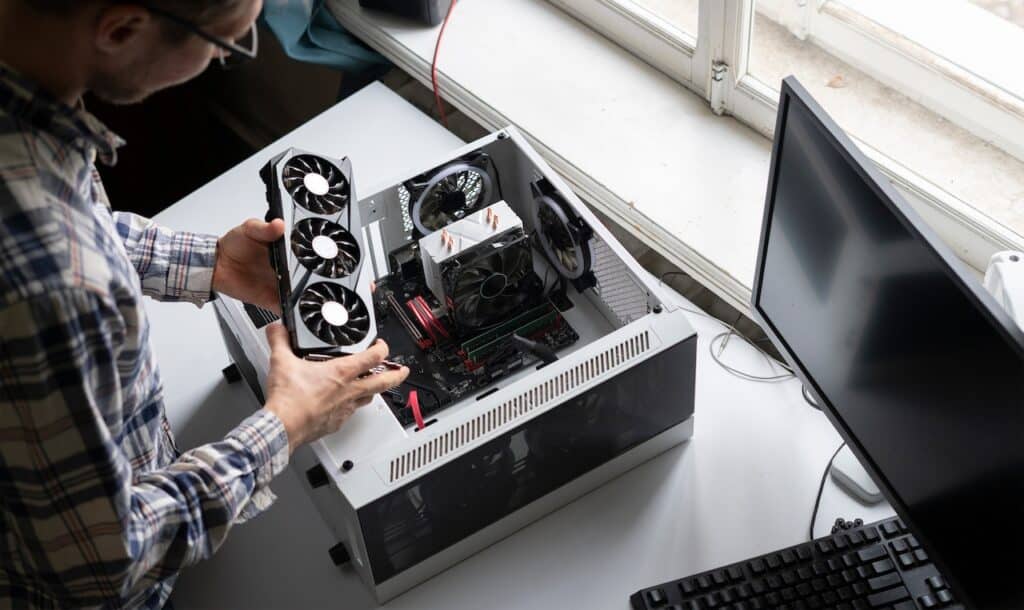Everyone—business leaders, tech gurus, and of course, your remote workers—is talking about the increased productivity that comes from remote work. And while many studies prove their point, an important way for your employees to access that productivity is with the right tools.
And what’s one essential tool for the modern worker? A reliable work from home computer.
What Does Your Remote Team Need?
The simple fact is that not all remote employees have the same needs when it comes to work from home computers. Your graphic designer will likely need a more robust machine than your customer service team, and your salespeople may just need something portable for on-the-go presentations.
Talk to your employees to understand the programs, applications, and tasks they’ll be running on their remote computers. This information will help you determine the necessary storage, processing power, and other specifications required for each team member.
While it’s essential to consider each person’s role, there are some overall features you should look for when selecting a computer for your remote team.
Essential Computer Specifications for Work From Home Computers
Let’s dive into the essential computer specifications you should consider when selecting work from home computers or laptops.
Processor (CPU) Power and Types
The processor is the brain of the computer. Faster processors can handle more demanding tasks, making them crucial for tasks like video editing or 3D modeling. Choose CPUs that match the demands of your team’s work.
RAM (Random Access Memory) Capacity
RAM influences the computer’s multitasking capabilities. More RAM allows for smoother performance when running multiple applications simultaneously. Consider at least 8GB of RAM for most remote work tasks.
Storage Options (HDD vs. SSD)
Hard Disk Drives (HDDs) provide ample storage but are slower compared to Solid State Drives (SSDs). SSDs offer faster data access and are ideal for improved system responsiveness.
Graphics Capabilities
For tasks like graphic design or video editing, a dedicated graphics card may be necessary. Ensure the computer’s GPU can handle the specific needs of your team.
Screen Size and Resolution
Screen size and resolution impact the user’s experience. Choose a size that suits the work and consider high-resolution displays for better clarity.
Battery Life (For Laptops)
For work from home laptops, battery life is crucial. It ensures mobility and productivity without being tethered to a power source.
Operating System Considerations
The operating system is the backbone of a computer, managing both software and hardware, and essentially driving user interaction with the device.
Selecting the right operating system for your remote team is another important facet of setting up an efficient work from home environment, as it would impact software compatibility, user experience, and even cybersecurity.
Windows, macOS, or Linux
The choice depends on the compatibility with your team’s software and their familiarity with the OS. Windows is versatile, macOS is renowned for creative tasks, and Linux offers customization and control.
Compatibility and Software Considerations
Each OS has its ecosystem and software compatibility. Ensure that the chosen OS aligns with the applications your team needs to use.
Laptops vs. Desktop: The Longstanding Work From Home Computer Debate
The decision between work from home laptops and desktops hinges on a few main factors and may come down to each individual employee. Laptops offer mobility, while desktops provide power and reliability. Consider the team’s need for portability, durability, and performance.
Consider the available workspace, the need for external monitors, and the possibility of hybrid work models. If you have hybrid workers, laptops may be a better choice for flexibility.
Other Considerations for Your Work from Home Computers
There are a few more things to keep in mind as you decide between work from home laptops or desktops for your remote team.
1. Budget and Cost Factors
While selecting computers for your remote team, it’s essential to strike a balance between cost and performance. Invest in computers that meet your team’s needs without overextending your budget. TrinWare offers a range of affordable yet high-quality options for remote work computers.
2. Collaboration and Communication Tools
Ensure the selected computers are compatible with your team’s preferred communication and collaboration tools, such as video conferencing software, messaging apps, and project management platforms.
3. Security and Data Protection
Work from home computers must have robust security measures, including encryption, antivirus software, and regular updates. Data protection is paramount, especially when handling sensitive information.
4. Support and Maintenance
Consider the availability of support and maintenance services. Some operating systems might have more extensive technical support, while others may require specialized assistance.
5. Customizing Computers for Specific Roles
Every team is unique, and your remote team’s computer needs may vary by role. Consider customizing computers to suit specific roles. TrinWare’s experts can assist in tailoring computers to meet your exact requirements.
Schedule a call with us to get started on selecting the right computers for your remote team today. With our expertise and a wide range of options, we can help you create a productive remote work environment that keeps your team connected and efficient—the two things every business needs to grow.




